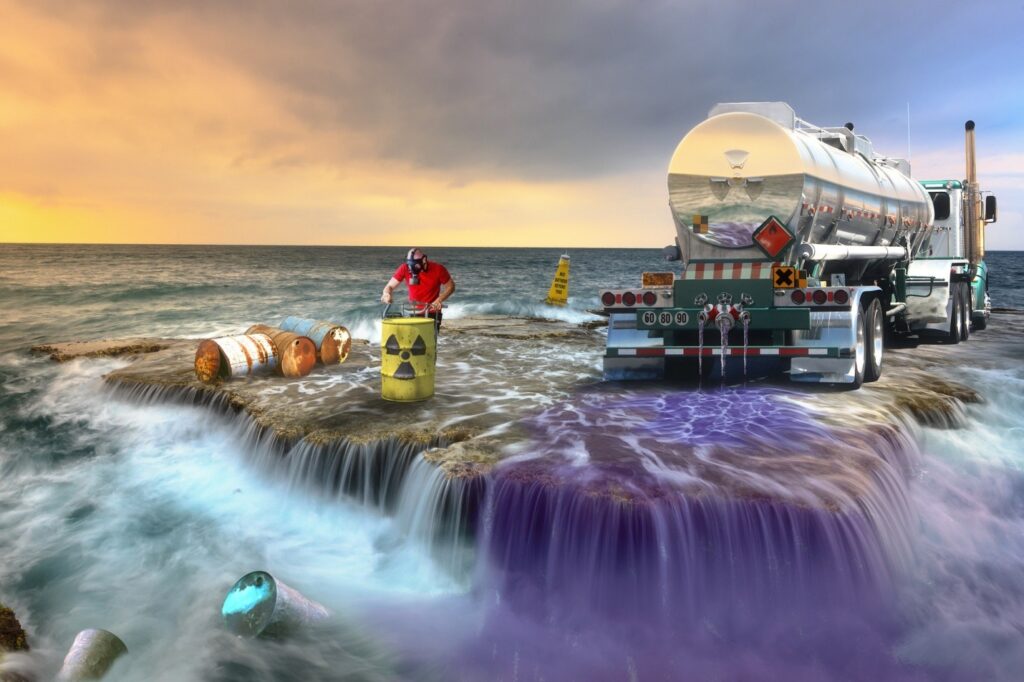More About Reclaim Waste
More About Reclaim Waste
Blog Article
Not known Details About Reclaim Waste
Table of ContentsThe Single Strategy To Use For Reclaim WasteThe Best Guide To Reclaim WasteThe Reclaim Waste StatementsReclaim Waste for BeginnersThe smart Trick of Reclaim Waste That Nobody is Discussing
Explore the types, occurrences, and kinds of fluid waste. Domestic sewer waste describes the waste and items from a residential sewage-disposal tank. This sort of waste is produced by humans in residences, institutions, and other structures. This only includes septic containers that have a drainpipe field. The appropriate management and disposal of domestic sewer waste require fluid waste to be moved to a sewer treatment plant where the appropriate methods and tools are applied to purify and get rid of waste.
Commercial waste typically consists of prospective threats, such as flammable materials or a blend of liquid and solid waste products, and needs an advanced and detailed disposal process. The disposal of commercial waste generally involves the purification of waste before transportation to make certain safe and proper disposal. Hazardous waste is developed from byproducts and overflow of commercial procedures and manufacturing.
This kind of waste can not make use of the same sewage administration transport or procedures as septic or commercial liquids. The hazardous waste administration process needs the examination and screening of fluid waste prior to it undertakes the disposal procedure (liquid waste removal melbourne). Runoff waste is the liquid waste that comes from overflow and excess stormwater in extremely booming areas or cities
Runoff waste can create contamination and flooding if not dealt with effectively. Find out more concerning sewage system cleansing and waste management. Guaranteeing proper waste administration can stop catastrophes and minimize environmental damage. Both individuals in property settings and professionals in commercial or manufacturing sectors can profit from comprehending the processes and policies of liquid waste monitoring.
Some Ideas on Reclaim Waste You Need To Know
Get in touch with PROS Services today to discover about our waste monitoring and disposal services and the appropriate ways to look after the liquid waste you create.
(https://ameblo.jp/reclaimwaste1/entry-12874802223.html)This supposed 'wastewater' is not just a crucial source however, after treatment, will certainly be released to our land, waterways or the ocean. Utilized water from toilets, showers, baths, cooking area sinks, laundries and commercial processes is understood as wastewater.

water made use of to cool equipment or clean plant and YOURURL.com equipment). Stormwater, a type of wastewater, is drainage that streams from farming and metropolitan locations such as roof coverings, parks, gardens, roadways, courses and rain gutters into stormwater drains pipes, after rainfall. Stormwater streams neglected straight to regional creeks or rivers, eventually reaching the ocean.
Everything about Reclaim Waste
In Queensland, many wastewater is treated at sewer therapy plants. Wastewater is transferred from domestic or industrial sites through a system of sewers and pump terminals, known as sewerage reticulation, to a sewer treatment plant. Neighborhood governments develop, keep and run most sewage therapy plants. Operators are licensed under the Environmental Management Act 1994 to discharge cured wastewater at an acceptable environmental standard into waterways.
The Department of Natural Resources suggests regional federal governments about managing, operating and preserving sewage systems and treatment plants. In unsewered locations, neighborhood federal governments might need homeowners to set up private or home sewer treatment systems to treat domestic wastewater from toilets, cooking areas, restrooms and laundries. The Division of Natural Resources authorizes using family systems when they are verified to be effective.
The majority of stormwater gets no therapy. In some new subdivisions, treatment of some stormwater to get rid of clutter, sand and gravel has started utilizing gross pollutant catches. Wastewater treatment takes place in four stages: Eliminates strong issue. Bigger solids, such as plastics and other items mistakenly released to sewage systems, are eliminated when wastewater is gone through screens.
Wastewater after that flows into big containers where solids clear up and are eliminated as sludge. Oil and scum are skimmed from the surface. Uses little living microorganisms called micro-organisms to break down and remove continuing to be liquified wastes and fine particles. Micro-organisms and wastes are integrated in the sludge. Eliminates nitrogen and phosphorus nutrients that can create algal blossoms in our waterways and intimidate marine life.
The Buzz on Reclaim Waste
Nutrient removal is not available whatsoever sewer therapy plants since it calls for costly specialised equipment. It is becoming much more common in Queensland. Clear liquid effluent created after therapy may still consist of disease-causing micro-organisms. If this effluent is launched right into waterways such as rivers or the sea, the micro-organisms will at some point pass away out.

This typically indicates wastewater has to be treated or contaminants eliminated prior to it can be discharged to waterways. Most wastewater flows into the sewage system. Under the Act, city governments provide approvals and permits for ecologically relevant tasks (ERAs) entailing wastewater releases that could have a regional effect. The division provides approvals and permits to Ages including wastewater launches that might have a regional or statewide impact.
All about Reclaim Waste
Monitoring offers factual information about water high quality and can verify that licence conditions are being satisfied. The information obtained via monitoring provides the basis for making water quality choices.
Report this page